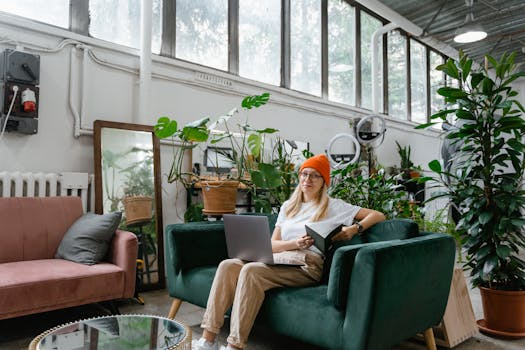Wellness-Focused Home Design: Creating Healthier Living Spaces
In today’s world, where we are constantly bombarded with stress, pollution, and unhealthy habits, it has become more important than ever to make our homes a sanctuary for our physical and mental well-being. This is where wellness-focused home design comes into play, where design elements are strategically incorporated to promote healthier living spaces. From the use of natural light and ventilation to incorporating plants and decluttering, there are many ways in which we can create a home that nurtures our well-being. Let’s delve deeper into the concept of wellness-focused home design and explore how it can benefit us in creating healthier living spaces.
The Importance of Wellness-Focused Home Design
Home is not just a physical space; it is where we seek refuge from the outside world, recharge ourselves, and spend time with our loved ones. Therefore, it is crucial that our homes foster a sense of wellness and contribute to our overall health. According to a study by the Harvard T.H. Chan School of Public Health, living in a well-designed home can improve our physical and mental well-being, reduce stress and boost our happiness levels. This is where wellness-focused home design plays a vital role.
Natural Light and Ventilation
Natural light and ventilation are essential elements of a wellness-focused home design. Exposure to natural light helps regulate our circadian rhythm, which is responsible for our sleep-wake cycle. It also aids in the production of Vitamin D, which is essential for our immune system and bone health. Similarly, proper ventilation ensures that our homes are free from harmful pollutants and toxins, promoting a healthier indoor environment.
When designing or revamping your home, consider incorporating large windows and skylights to allow natural light to flood in. Also, invest in a good ventilation system to ensure proper air circulation throughout your home.
Indoor Plants
Indoor plants not only add aesthetic value to our homes but also bring numerous health benefits. They help purify the air by absorbing toxic chemicals and releasing oxygen, improving the indoor air quality. Certain plants, such as lavender and jasmine, have also been found to promote relaxation and reduce stress levels. Additionally, the act of caring for plants can have a positive impact on our mental well-being by providing a sense of purpose and connection with nature.
When choosing indoor plants, opt for low-maintenance ones that can thrive in indoor conditions. Some good options include Snake Plants, Peace Lilies, and Aloe Vera.
Decluttering and Organization
A cluttered and disorganized home can lead to feelings of stress and anxiety. It also hinders our ability to focus and increases our risk of accidents. On the other hand, a clean and organized home promotes a sense of calm and boosts productivity. Therefore, decluttering and organizing our living spaces is an essential part of wellness-focused home design.
Start by getting rid of items that you no longer need or use. Then, assign a designated spot for each item and make sure to put things back in their place after use. Invest in storage solutions to keep your home clutter-free and organized.
Other Considerations for Wellness-Focused Home Design
Color Psychology
The colors we choose for our homes can have a significant impact on our mood and well-being. Colors such as blue and green have a calming effect, while yellow and orange can promote energy and creativity. Consider incorporating these colors into your home decor to create a peaceful and energizing environment.
Ergonomic Design
Ergonomic design is all about creating a space that promotes comfort and efficiency. This includes choosing furniture that supports our posture, ensuring proper lighting for different tasks, and creating a clutter-free workspace. An ergonomic home design can prevent physical strain and discomfort, leading to a healthier and more productive you.
Incorporating Mindfulness Spaces
In today’s fast-paced world, it is essential to take time out to unwind and practice mindfulness. Designating a space in your home for yoga, meditation, or reading can help create a sense of calm and promote relaxation. Make sure this space is free from distractions and has a soothing atmosphere.
In conclusion, a wellness-focused home design goes beyond just aesthetics; it is about creating a space that promotes our physical, mental, and emotional well-being. By incorporating elements such as natural light and ventilation, indoor plants, decluttering, and mindful spaces, we can create a home that nurtures our well-being and helps us lead a healthier and happier life.






